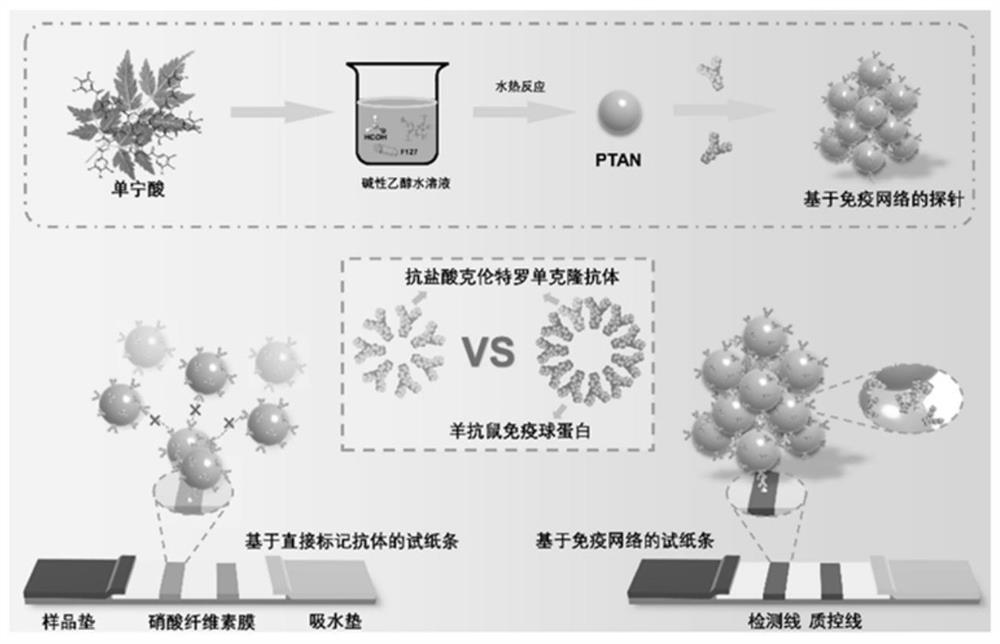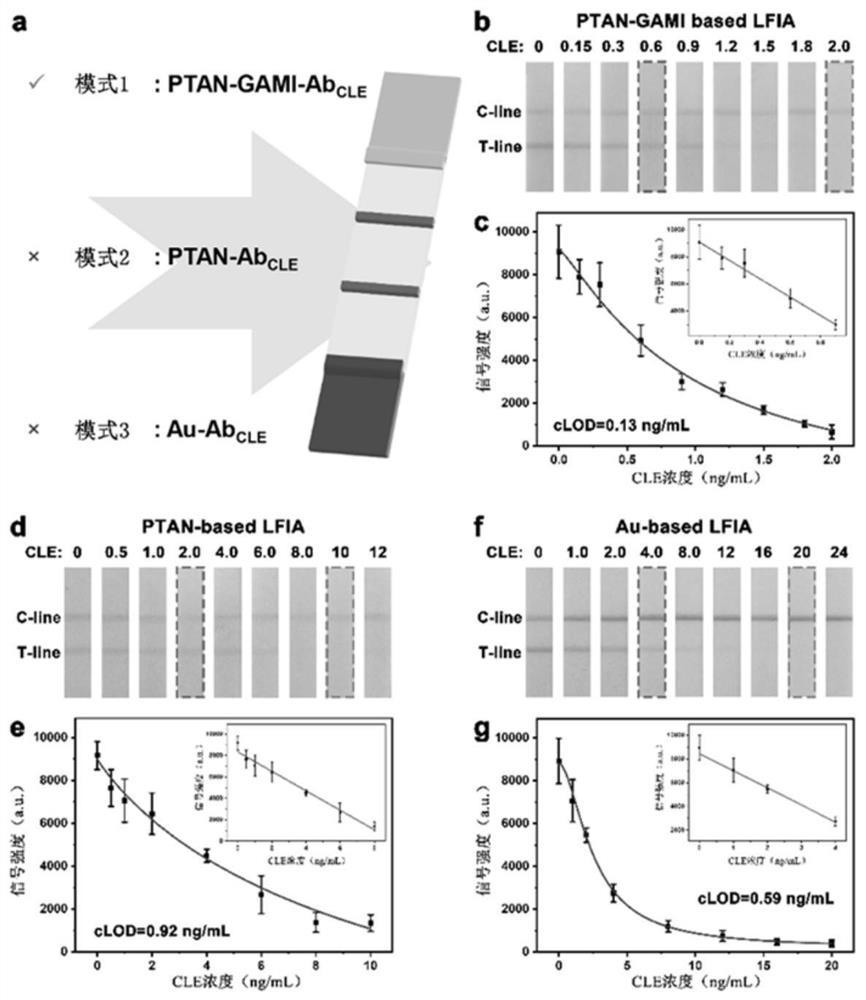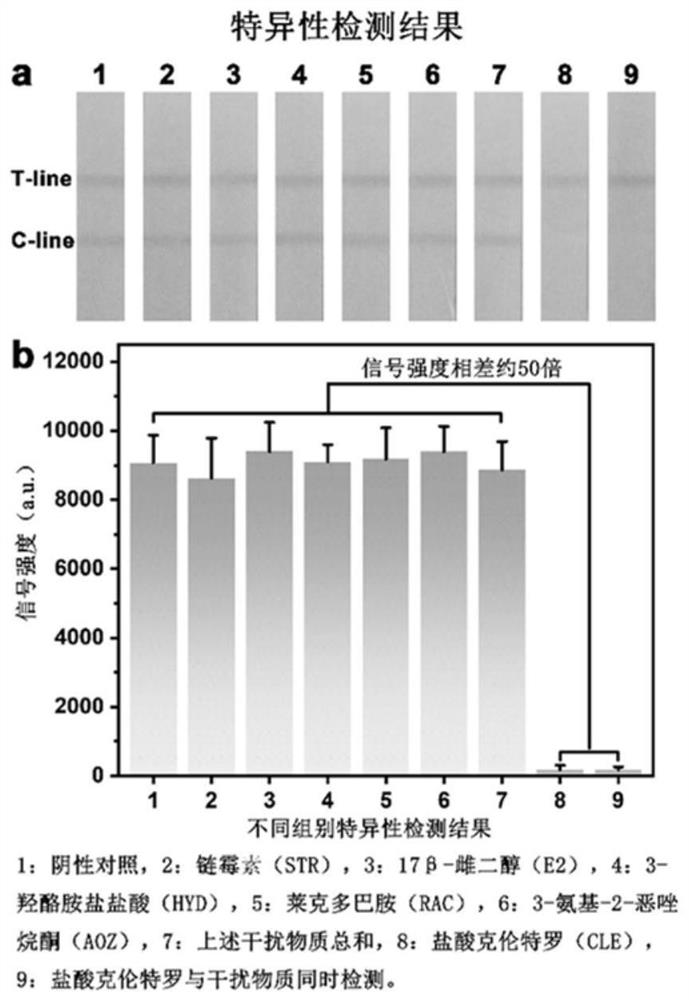Tannic acid immune network and clenbuterol hydrochloride test strip detection method
A technology of clenbuterol hydrochloride and immune network, applied in the field of a method of terol detection, to achieve the effect of reduced antibody consumption, low consumption, and rapid analysis process
- Summary
- Abstract
- Description
- Claims
- Application Information
AI Technical Summary
Problems solved by technology
Method used
Image
Examples
preparation example Construction
[0027] Preparation of novel immunoprobes: see figure 1 , Add specific anti-clenbuterol hydrochloride monoclonal antibody (AbCLE) to the pre-prepared immune network in proportion, couple at room temperature for 40 minutes, centrifuge to remove excess BSA, resuspend and place at 4°C for use.
[0028] The monoclonal antibody against clenbuterol hydrochloride used in the present invention is obtained by the applicant's research group by using cell fusion technology to screen positive cells and induce a large amount of production in the peritoneal cavity of mice. Prepared with reference to the method described in the article "Production of ultrasensitivegeneric monoclonal antibodies against major aflatoxins using a modified two-step screening procedure" on pages 63-69 of volume 635 of the publication "Analytical Chimica Acta" by Zhang Daohong et al.: Clenbuterol hydrochloride artificial antigen, namely the commercially available clenbuterol hydrochloride CLE-bovine serum albumin co...
Embodiment 1
[0032] Preparation method of anti-clenbuterol monoclonal antibody
[0033] The preparation method of anti-clenbuterol hydrochloride monoclonal antibody comprises the following steps:
[0034] 1. Ascites collection:
[0035] Clenbuterol hydrochloride cells were cultured in advance, and when the cells grew to a good state, the cell line was injected into BALB / c mice that had been treated with liquid paraffin in advance, and the ascites of the mice was collected when the abdomen of the mice was obviously swollen.
[0036] 2. Antibody purification:
[0037] The antibody was purified by the octanoic acid-ammonium sulfate method. The specific operation was as follows: the ascites was filtered with double-layer filter paper, centrifuged at 12000 r / min for 15 min at 4 °C, and the supernatant was absorbed. The ascites supernatant obtained was mixed with 4 times the volume of acetate buffer, and n-octanoic acid 33 μL / mL ascites was slowly added under stirring, mixed at room temperatur...
Embodiment 2
[0043] 1. Polytannic acid nanospheres (PTAN) were prepared by formaldehyde-assisted cross-linking and hydrothermal reaction.
[0044] The specific method is: take 46 mL of distilled water, 8 mL of ethanol and 0.45 mL of ammonia water in a beaker, and after 60 min of magnetic stirring, slowly add 0.2 g of tannic acid powder, and observe that the color of the solution changes from colorless to light Yellow color, continue to add 0.38 mL formaldehyde under stirring and continue stirring for 24 h, then move to the reaction kettle at 100°C for 24 h. After being centrifuged and washed with water, the polytannic acid solution was obtained, and the product was stored in a refrigerator at 4 °C for later use. The particle size is about 131 nm.
[0045] 2. The preparation method of the immune network probe is as follows:
[0046] Take 6 mg / mL PTAN solution, add 20 μL 1 mg / mL goat anti-mouse immunoglobulin (GAMI) solution, incubate at room temperature for 40 min; add 10% bovine serum al...
PUM
| Property | Measurement | Unit |
|---|---|---|
| The average particle size | aaaaa | aaaaa |
Abstract
Description
Claims
Application Information
 Login to View More
Login to View More - R&D
- Intellectual Property
- Life Sciences
- Materials
- Tech Scout
- Unparalleled Data Quality
- Higher Quality Content
- 60% Fewer Hallucinations
Browse by: Latest US Patents, China's latest patents, Technical Efficacy Thesaurus, Application Domain, Technology Topic, Popular Technical Reports.
© 2025 PatSnap. All rights reserved.Legal|Privacy policy|Modern Slavery Act Transparency Statement|Sitemap|About US| Contact US: help@patsnap.com



